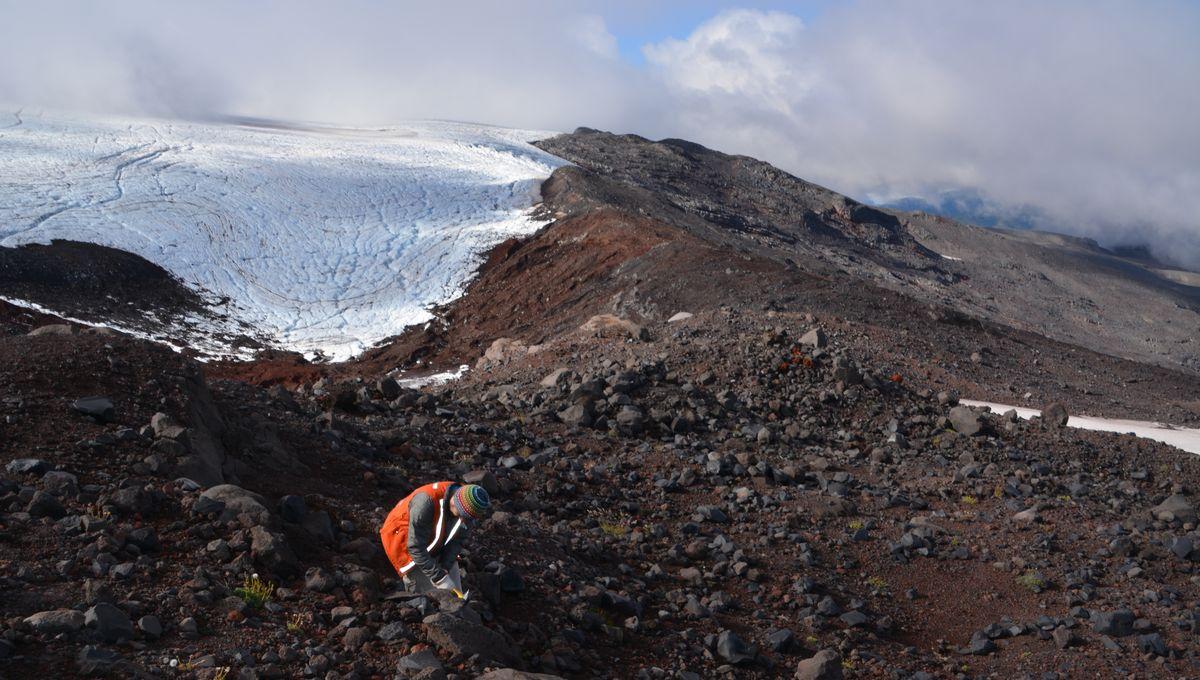-
Noticias Feed
- EXPLORE
-
Páginas
-
Blogs
-
Foros
Less Ice, More Fire: Evidence Melting Glaciers Make Volcanic Eruptions More Explosive

Less Ice, More Fire: Evidence Melting Glaciers Make Volcanic Eruptions More Explosive
The eruptions of volcanoes in Chile have been influenced by the expansion and contraction of the glaciers above them, a major geology conference has been told. Although the findings indicate southern Chile can expect more volcanic activity in future, the more important side of the research is the implications it holds for Antarctica.
Decades of research in Iceland have found that when the island’s glaciers retreat, the reduced weight can set off eruptions in the many volcanoes there. Iceland, however, sits on a mantle plume, whereas most continental volcanoes, Ethiopia’s aside, are the product of tectonic processes, so the general applicability of the work has remained in question. Researchers used argon isotopes to date the eruptions from six volcanoes in southern Chile, and confirmed what had been feared. They reported that activity dropped during the peak of the last Ice Age, 26,000-18,000 years ago, and rose again thereafter. The findings expand on previously published work by the same authors conducted on just one volcano. One of the samples from Mocho-Choshuenco volcano is melted with a CO2 laser to release argon for analysis. Image credit: Pablo Moreno-Yaeger The work confirms the theory that the pressure applied by heavy ice makes it harder for magma to reach the surface, instead causing it to build up 10-15 kilometers (6-9 miles) below. When the ice melted the reduced weight relaxed the crust, allowing gases within the magma to expand. The gas inside the magma chamber then builds up until there is sufficient pressure to cause an eruption. "Glaciers tend to suppress the volume of eruptions from the volcanoes beneath them. But as glaciers retreat due to climate change, our findings suggest these volcanoes go on to erupt more frequently and more explosively,” said Pablo Moreno-Yaeger of the University of Wisconsin-Madison in a statement. "The key requirement for increased explosivity is initially having a very thick glacial coverage over a magma chamber, and the trigger point is when these glaciers start to retreat, releasing pressure – which is currently happening in places like Antarctica,” Moreno-Yaeger added. "Our study suggests this phenomenon isn't limited to Iceland, where increased volcanicity has been observed, but could also occur in Antarctica. Other continental regions, like parts of North America, New Zealand and Russia, also now warrant closer scientific attention." Antarctica’s volcanoes at least don’t have nearby inhabitants that can be threatened by the explosions, and populations are sparse around most other sites Moreno-Yaeger referred to. However, just last month Mount Iliamna, which sits uncomfortably close to Anchorage, rumbled alarmingly. The now-retreating ice on top of the mountain may be part of the reason it hasn’t erupted for at least a century. Moreover, large eruptions can have impacts far from home. The 2010 Eyjafjallajökull explosion shut down flights across Europe, significantly affecting economic activity. Sulfur dioxide expelled by volcanoes causes temporary planetary cooling, but the carbon dioxide released leads to warming on a longer timescale. Most eruptions are too small to make a noticeable impact on a global scale, but with more than 100 volcanoes beneath Antarctica, in addition to those in other glaciated parts of the world, a vicious circle could be initiated. Moreover, increased activity near ice sheets can also cause them to melt faster. The work is consistent with modeling released earlier this year that predicted accelerated melting of a 1-kilometer (0.6-mile) ice sheet could cause the escape of 50 million tonnes of volcanic material. Last year IFLScience was asked whether global warming-induced ice retreat could trigger extra eruptions. Consultation with experts led to the conclusion it was likely, but there wasn’t enough evidence to be sure, particularly about the timescale. Although further study is required to establish how imminent the threat is, signs we need to be worried have got stronger since. The study was presented at the Goldschmidt Conference 2025. 


